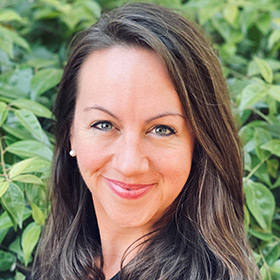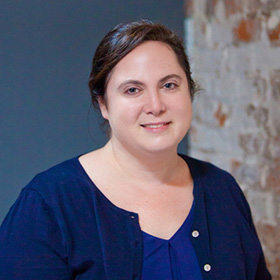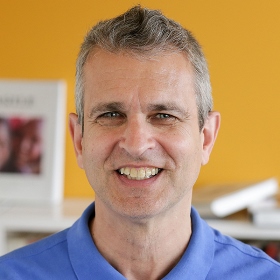Funders continue to express interest in investing in systems change to achieve population-level impact. They are supporting field-building efforts from climate change to gender equity, and other local, national, and global challenges. Frequently, at the center of those efforts are nonprofit field catalysts (see “What Are Field Catalysts” below), which harmonize the contributions of many actors so the whole is greater than the sum of its parts.
Many funders are also asking a good question about supporting these field catalysts: How do we know that they are making progress on systems change and that our investment is paying off?
Systems change efforts, when they succeed, can have an enormous impact. For example, after a decades-long effort to reduce tobacco use in the United States—funded in significant part by philanthropy and led by nonprofit field catalysts like the Campaign for Tobacco-Free Kids and Tobacco-Free Kids Action Fund—the extent of progress is visible. Public perception of the risk of smoking jumped among adults and children, smoking rates plummeted, and an array of policy changes—smoking bans, tougher limits on the sale of tobacco products to minors—continue to curtail tobacco use. Over the course of a generation, measuring progress can be a breeze.
But measuring progress in the earlier stages, and over shorter time periods, is not always intuitive, for field catalysts and funders alike. Though funding the earlier stages of systems change can end up having an outsized long-term impact—in those earlier stages, it can be very hard to see any impact, using traditional measures.
What Are Field Catalysts
Field catalysts are among the highest-leverage investments that philanthropy can make when it comes to systems change.They go by various names—field builders, systems orchestrators, nerve centers—and they play a distinct, critical, and often behind-the-scenes role. Their work includes regularly diagnosing and assessing the root causes they seek to address, identifying the full landscape of actors working on the issue, connecting and organizing these actors around a shared goal, advocating or shining a spotlight on the issue, and filling many critical gaps in the collective effort. The field catalysts mentioned in this article include the Campaign for Tobacco-Free Kids, the Tobacco-Free Kids Action Fund, Freedom to Marry, RBM Partnership to End Malaria (formerly known as Roll Back Malaria), Global Methane Hub, and Health Care Without Harm.
Many ambitious systems change efforts spend much of their early years in the wilderness, without sharp clarity on what actions will have the greatest impact. In the long effort to achieve marriage equality in the United States, for example, donors who poured millions into Freedom to Marry endured defeat after defeat before the tide turned. Halfway through Roll Back Malaria’s campaign to halve malaria fatalities, deaths from the disease were even higher globally than when they started. And one very different kind of systems change effort—the campaign to impose abortion restrictions in the United States—took decades and many millions of dollars before Roe v. Wade was overturned in 2022, leading to a host of new restrictions imposed by states.
Our Bridgespan team has for several years been studying the role of donors in supporting systems change work and the organizations that lead it. We haven’t discovered a universal formula for measuring progress in the early stages, and given the nature of systems change, we don’t believe there should be one. By its nature, supporting systems change requires a mindset that leads to a different approach to measurement, prioritizing contribution over attribution, employing multiple methods to capture data, and adapting as the work itself changes.
But we do have three pieces of practical advice for funders who want to have a conversation about the impact their investments in field catalysts may be having or to inform potential future investments.
Ask Field Catalyst Leaders How They Measure Progress and Support Their Approach
What long-term outcomes are you working toward, and what are the indicators you are tracking along the way to understand progress?
It’s a hard question to answer—nearly half the respondents in our 2022 survey of 98 field catalysts on their experiences and challenges reported that they found measurement difficult— but a field catalyst will nevertheless be able to describe how it measures progress. And funders should hold a high bar before they seek to substitute their own metrics for those suggested by a field catalyst.
The leaders of these field catalysts are vital. It’s frequently what those leaders bring to the work that makes field catalysts so unique: a deep understanding of the problem and ecosystem, a vision for equitable and durable change, an organizer’s mindset (how to bring key actors to the table, weave connections among them, and figure out how best to take advantage of the moment), and trusting relationships and credibility with the actors required to achieve change. (See our “Conversation Starter: How Field Catalysts Contribute to Progress in Their Fields” for tips on how funders can get a better understanding of how a field catalyst approaches measurement in its field.)
With these assets, an organization’s leaders should be able to describe what success looks like in the longer term—the eradication of malaria in every country, an end to the death penalty in every US state, or other compelling system-relevant metrics.
Field catalysts should also be able to describe what work will take priority in the near term to achieve long-term goals. They are chronically under-resourced, and what they have (e.g., networks with key stakeholders) and what they do (e.g., capacity-building grants for planning and measurement) are often under-recognized. Yet the shorterterm, often unglamorous work behind building networks and measurement capabilities, among other things, is critical for funders to recognize and support in the early or middle periods of a systems change effort. Building traction and learning what it will take to ultimately be successful is at the heart of this early-stage work, and measurement is the learning tool. For example, one common answer to the question about early priorities is “we need to learn more”—about the nature of the issue, barriers, solutions, or connections across issues.
After experiencing disaster in 2004 elections, when 11 states passed amendments banning same-sex marriage, polling and message testing became priorities for Freedom to Marry and its funders. Over time, their polling and message testing led to a shift from talking about LGBT couples’ rights to talking about love. Eventually public opinion, election results, and laws changed.
Supporting this kind of early-stage work often requires patience. Durable solutions require a strong foundation and trust in the field catalyst and its leadership. When the problem is urgent and the way ahead isn’t clear, it’s easy to wonder, “People are dying, and they want to conduct a study, do some polling, hold convenings, (fill in the blank)?” But if their experience and relationships identify these as the most important next steps, this is what a field catalyst will need to focus on to have a chance of achieving an ambitious longer-term goal.
In the Earlier Stages, Assessing Progress May Be More About Outputs Than Outcomes
What are you finding to be the most critical and informative outputs to track and learn from and why?
One savvy funder, who is devoting considerable resources to supporting ambitious system change efforts, recently said, “We have been told for decades not to focus so much on outputs—but now we’re supposed to do the opposite?” But focusing on short-term outputs in service of ambitious aims is entirely logical when meaningful outcomes are a long way off.
For example, consider the Global Methane Hub (GMH) formed in 2021 with the goal of mitigating methane emissions and putting us on a path to a livable future climate. In these early stages, GMH is measuring progress in terms of the outputs on which it and its partners are focused: tracking global public opinion, mapping emissions to enable local action, and mobilizing funding for critical research. These outputs are critical to keeping pace with GMH’s overall goal of limiting global warming to 1.5 degrees Celsius above preindustrial times.
Another example is Roll Back Malaria (now the RBM Partnership to End Malaria), a field catalyst founded in 1998 to dramatically reduce malaria. It didn’t treat patients or deliver bed nets or insecticide firsthand. Rather, it helped build public awareness, aggregate and share information with global stakeholders, and mobilize funding. It stuck with measuring outputs related to those activities throughout its early years, all while sickness and death from malaria continued to rise, putting its desired outcome seemingly further from reach. Then, starting in the early 2000s and continuing into the late 2010s, the tide turned. Increased public awareness, global coordination, and nearly $2 billion in new funding contributed to worldwide deaths from malaria dropping by almost 40 percent—one of the most striking successes in the history of global health.
Field catalysts and their funders need to be masters of applying the dual lens of outputs and outcomes. On the one hand, they keep a finger on outputs that reflect the health and progress of the field itself; on the other hand, they track indicators of progress towards changing system outcomes.
The types of outputs that are often the focus of earlier field catalyst work (and are often a part of its theory of change) include:
- Field-level agenda: number of actors who identify with the movement or campaign’s overarching vision, new types of approaches identified and integrated
- Knowledge base: breadth of actors with access to relevant data and information, growth in insights from innovative models and pilots
- Actors: deepening trust among those working in the field, more actors starting to self-identify as working on our shared problem
- Infrastructure: number of opportunities for actors to collaborate, informal and formal structures for knowledge to be shared across groups
- Resources: new funding flowing into the field, particularly to grassroots actors; shared resources accessed
- Public-sector systems (in some contexts): clarified value proposition to public system actors, new champions, and proof points
Strategies and Measures of Progress May Change—and That’s a Good Thing
How is the context for your work changing, and how are you shifting your approach?
One of the fundamental jobs of a field catalyst is being alert and responsive to changes in their system. So, an organization may sometimes tell a funder: “Remember how we said that x is our top priority for the next two years? Scratch that, we now know y. So, our top priority is now z.” As one field catalyst tells us, “Our mantra is to stay in love with the problem, not our solution—we shift and shape to what is needed.”
Building on the work of the Campaign for Tobacco-Free Kids and the Tobacco-Free Kids Action Fund, advocates had to pay a lot of attention and respond quickly to the shifting tactics of the tobacco companies. The movement wasn’t necessarily planning to focus on flavored tobacco products, but when companies started aggressively marketing them to young people, it became a priority to educate the public and policymakers about how these products attracted kids and to work for restrictions and bans on their sale.
Similarly, Roll Back Malaria changed its name more than a decade to the RBM Partnership to End Malaria, reflecting the opportunity the world has to end the disease for good and its ambition to make it happen.
* * * * *
Field catalyst leaders will often say systems change isn’t linear. By which, they mean, in essence, “we’re not always sure what’s coming next.”
“Systems change doesn’t give a damn about year-over-year progress,” says Erin Ricci, senior director of philanthropic partnerships and strategy for Health Care Without Harm, which seeks to transform healthcare worldwide to reduce its environmental footprint. “Systems change is a longer play that needs funders willing to embrace the complexity of the landscapes they are working in.”
The most effective field catalysts—and the most effective funders—will accept this complexity and uncertainty, shifting tactics as needed, asking hard questions about how to measure progress at each stage, and always keeping their eye on the ultimate goal and the long game required to get there.
Download the “Conversation Starter: How Field Catalysts Contribute to Progress in Their Fields”
To help funders kickstart conversations, we’ve pulled together a set of specific questions a funder might ask a field catalyst leader, aligned with five observable field characteristics (and sometimes a sixth) that we know together enable fields to make progress toward equitable systems change.
Please fill out the form below to download a PDF of the conversation starter. We use the information we collect to help us improve our content and to inform our funders about the impact of our work. We will never share your personal information with any third party without your permission. If you'd rather not share your information, you can download the materials by clicking the following link: Conversation Starter: How Field Catalysts Contribute to Progress in Their Fields.





